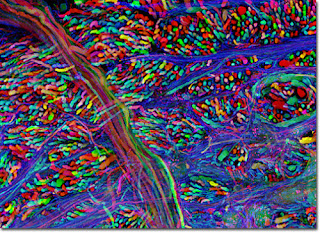 |
| Cheese I ate today. I'm a fanatic of that one in the lower left, a specialty of local cheese making expert, Barbara Jenness. |
I ate some cheese today. Actually, it was quite a bit of cheese as far as variety goes. Have you noticed a trend when I discuss foods and beverages? They have all been practiced since ancient days and there are different varieties of them from all over the world. Bread, cheese, beer, chocolate, tea... Wine would fit nicely in this list.
And today the focus was on cheese. Fortunately we had a cheese whiz (thank you, thank you) come in and talk all about making cheese and different varieties. I payed special attention to this lady because one day I hope to make cheese myself and impress all my guests at a dinner. Yes, it is more of a hassle and more expensive to do this, but it's something I think we should all try at one point. Right? So let me go though the process of making cheese.The Process of Making Cheese
Cheese, like all of the foods and drinks I've discussed (except for maybe tea), has its own special and intricate process of production. There are four main elements for making cheese:
- Milk - Well, that one was kind of obvious. It needs to be acidified and curdled, which involves the next two.
- Culture - Yes, you need some sort of rich heritage made up of peoples, arts, ideas, language. Psych! Not that kind of culture. I'm talking about the bacterium kind. Replacements include buttermilk, vinegar, and lemon juice.
- Rennet - I'm sorry, could you rennet by my again? I said, "Rennet." This is the agent which actually curdles the milk. I'll discuss these elements more in depth later.
- Salt - That's right. You need to add a small amount of salt to your concoction, and now you're ready to cheesemake!
Milk
 |
| They sure can drink though! |
Culture
There are hundreds of species of bacteria you could use to acidify milk. The Average Cheese Making Joe (ACMJ) will probably not use culture, but people who make cheese for money or even a living will use bacteria. This is not to say that big cheese companies (pun originally unintended) use culture. But you know big companies. Now, for someone like me, an ACMJ, procuring a special strain of bacterium might not be worth the trouble. Not to fear. As I mentioned before, lemon juice, buttermilk, and vinegar can all acidify your milk. Try different things for different cheeses!
Rennet
 |
| Adding rennet to the mix. |
Salt
Add a pinch of salt or two. There's not a whole lot to comment about. There's definitely a reason besides flavor to add salt, but I can't quite remember. Something about chemicals...?
Process of Cheese Making
Alright you ACMJs, get ready for some impressive cheese that will awe your friends at your next social occasion when you tell them, "Oh that? I made that. Yeah, no bigs. I make cheese. What of it?"
Step 1: Watch this video and do everything it says.
Step 2: Serve to your friends.
Step 3: Recite that quote from above.
And a last note about cheese: There are three important factors when dealing with cheese: Time, Temperature, and pH. When the milk's in the pot, the temperature should be anywhere from 70 - 90 degrees. It depends on which cheese you're going for. Look up each cheese's specific temperatures. The same goes for pH, but you're aiming for about 6.6, give or take 0.4 or so. The time refers to aging the cheese. You'll find that the more you eat cheese, the more you'll know about when you like eating it. Some cheese eaters like to eat bleu cheese when it's aged to the maximum. You may find you like eating a certain type of cheese very young. As you become a more experience cheese eater (or cheater, for short) you'll discover more about the way you prefer when and how your cheese is served. Enjoy.



























